Shipping Study of the Pentland Firth and Orkney Waters
A study of shipping activity to better inform the marine spatial plan pilot for the Pentland Firth and Orkney Waters Strategic Area. The aim of this process is to ensure there is good knowledge of the
use of these waters by all stakeholders so that futur
10. CONCLUSIONS
10.1 Context
This report summarises the study of commercial shipping and recreational vessel movements in the Pentland Firth and Orkney Waters ( PFOW ) Strategic Area ( Figure 10.1).
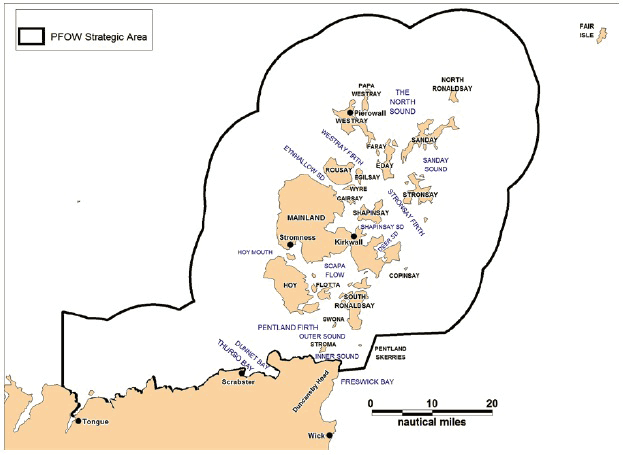
Figure 10.1 Overview of Pentland Firth and Orkney Waters Strategic Area
The study provides mapping, data and other information to inform the marine spatial plan pilot being undertaken by Marine Scotland for the PFOW Strategic Area. Given the international importance of the Pentland Firth as a shipping route, as well as the popularity of recreational sailing in Orkney waters, good quality information is needed to underpin the plan. This study is one of the studies being carried out in stage 2 of the pilot, to fill gaps identified by the combined stage 1 document [54] and the Regional Locational Guidance, available from Scottish Government via:
http://www.scotland.gov.uk/Topics/marine/marineenergy/wave/rlg/pentlandorkney
The study complements Marine Scotland's other work on commercial fishing vessel activity and military vessel movements, and future work planned on tourism and recreation activities, as well as initiatives such as Scotland's Marine Atlas. Background information on the study is provided in Sections 1 to 3 and 6.
This study has mapped commercial shipping and recreational vessel routes and collated related data, to help in marine spatial planning and in assessing the siting of proposed wave and tidal renewables developments in order to avoid or reduce interference or displacement of shipping and recreational vessel activities. The study:
- refreshes existing maps and information based on Automatic Identification System ( AIS ) data, and provides more up-to-date information to improve understanding of temporal variations in shipping activity;
- presents new data on commercial vessel movements, including ferries and vessels less than 300 Gross Tonnage ( GT);
- presents new data on recreational vessels, many of which are not tracked by AIS, but for which more representative data were required before the study.
The data include numbers of vessels, vessel types, tonnages and draughts for commercial shipping; tracks and destinations; and ports, harbours and anchorages used in the area. The data include vessels in internal Orkney waters, which were not included in the stage 1 document referred to above. The data collection has included the available AIS data, and stakeholder consultation (via questionnaire and local consultation) and by Steering Group participation in the study. The time periods over which data were gathered include summer and winter, to identify any related temporal variations. Consideration was given to routes used during bad weather, and anchoring areas were identified.
Sections 4 and 5 present details on the initial tasks carried out to gather data for the study, which involved a literature review and consultation with stakeholders, including use of a questionnaire and local workshops.
10.2 Commercial Shipping
The questionnaire also validated the approach being taken to characterise commercial shipping in the study area through detailed analysis of AIS data. This analysis is presented in Section 7. In total, eight weeks of AIS data was collected, four weeks in winter and four weeks in summer 2012, which ensured seasonal variations were taken into account. The AIS information was also checked against MCA reports for ships transiting the Pentland Firth to confirm it was comprehensive.
From the plotted tracks and the ship density (heat maps) produced, the busiest areas for commercial shipping were the Pentland Firth especially Outer Sound, approaches to Scrabster, Scapa Flow, Kirkwall and Stromness, Fair Isle Channel (north of Orkney Islands) and routes transited by the regular ferries in the area (Orkney Ferries, Serco NorthLink and Pentland Ferries).
A range of ship types were observed to be using the area with the main ones being:
- passenger vessels;
- cargo ships;
- tugs;
- tankers; and
- offshore vessels (working for the oil & gas and renewables industries).
Vessels varied in size from relatively small local ferries to large tankers calling at Flotta Terminal in Scapa Flow. Section 7 presents summary data and information on vessel type, length, draught and tonnage. The commercial shipping assessment also reviewed destinations, anchoring locations, hazardous cargoes and weather and tidal routeing.
Much can be gained from viewing the data presented in the graphs and commercial shipping maps in Section 7, but key conclusions include:
- Distribution of vessel types is similar in winter and summer, with passenger vessels being the most common type, followed by cargo vessels. There was a slightly higher average number of vessels per day during the summer period for the vessel categories of passenger, offshore and other. Commercial shipping in the Strategic Area tended to follow very defined tracks for the different vessel types. Figure 10.2 presents vessel tracks by type recorded in the summer period.
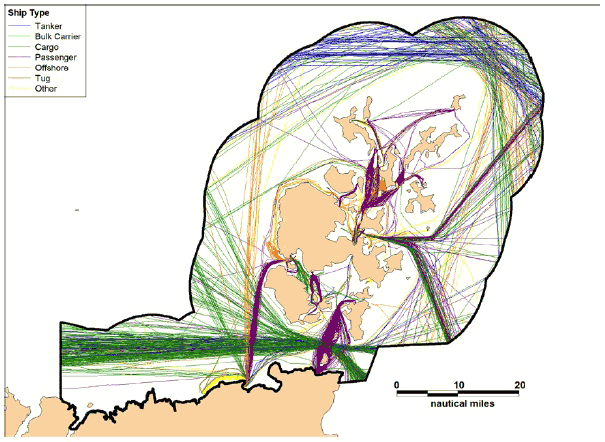
Figure 10.2 Summer 2012 AIS Track Analysis by Vessel Type
- The most common category of vessel length was <30m, comprised of mainly Orkney Ferries inter-island ferries and several tugs. There was a slightly higher proportion of vessels with lengths greater than 150m in the summer period due to an increase in the number of large cargo vessels and passenger cruise vessels in this period. The longest vessels tended to transit the area, either passing north of Orkney via the Fair Isle Channel or through the Outer Sound of the Pentland Firth, with the exception of passenger cruise vessels which called at Kirkwall during the summer period. Figure 10.3 presents vessel tracks by length as recorded during the summer survey.
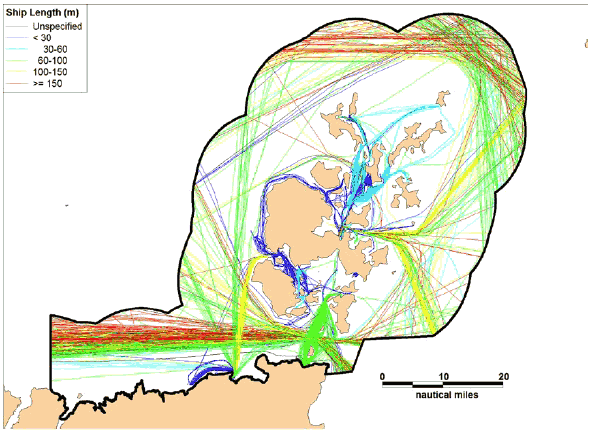
Figure 10.3 Summer 2012 AIS Track Analysis by Vessel Length
- The most common category of vessel draught was 4-6m. There was a higher proportion of deep-draught vessels in summer compared to winter, due to an increase in the number of large cargo ships. As with length, the deepest draught vessels tended to be transiting the Outer Sound of the Pentland Firth or the Fair Isle Channel. Figure 10.4 presents summer tracks by ship draught.
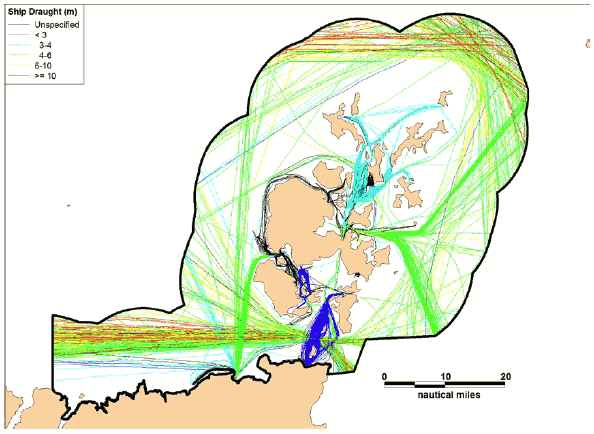
Figure 10.4 Summer 2012 AIS Track Analysis by Vessel Draught
- The pattern of vessel tonnage is similar to that observed in length and draught analysis. The most common category was 300-1,500 GT, with regular runners in this category including the Pentalina passenger ferry and Orkney Islands inter-island ferries. The heaviest vessels transited the Outer Sound and the Fair Isle Channel. Vessels over 15,000 GT tracked within the Orkney Islands were passenger cruise vessels and tankers associated with Flotta Marine Terminal.
- Tankers and gas tankers tracked within the Strategic Area were mainly transiting through the Outer Sound or through the Fair Isle Channel to a variety of destinations. Six tankers were tracked at harbours within the Strategic Area (Scrabster, Kirkwall, Flotta Marine Terminal and Scapa Bay).
- Bulk/ore carriers transited the Outer Sound and through the Fair Isle Channel. Destinations were all outside the Strategic Area.
- Cargo vessels both transited the Area and called at ports within the Area, including Kirkwall, Scrabster, Pierowall and Sanday.
- There were 15 regular passenger vessels working in the Strategic Area. These were inter-island ferries, ferries operating between the Scottish Mainland, Orkney and Shetland, and vessels transporting personnel to Flotta Marine Oil Terminal. These vessels all had well-defined passages. Twenty-five cruise vessels were tracked during the summer period, with 17 calling at harbours on Orkney and 8 transiting the Area. Figure 10.5 presents passenger vessels tracked during the 56 days combined survey period. Section 7.8 presents tracks of other vessel types.
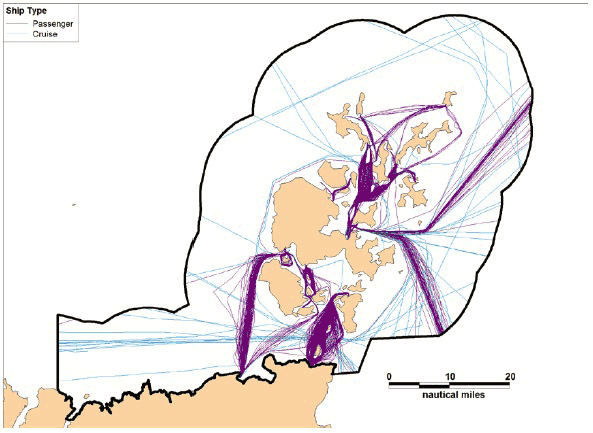
Figure 10.5 Combined 2012 AIS Track Analysis - Passenger Vessels
- Offshore industry vessels operating in the Area served both the oil and gas and renewables industries. Oil and gas vessels transited between the ports of Aberdeen, Scrabster and Kirkwall and their offshore destinations. Vessels undertaking offshore renewables work were associated with EMEC sites, and based at Kirkwall, Stromness and Eday.
- All tugs tracked called at harbours within the Area and were generally involved in local work rather than transiting. Destinations included Kirkwall, Scrabster, Westray, Stromness, Scapa Flow and the northern and southern Orkney Islands.
- Weather and tidal routeing is used by several passenger vessels in the Strategic Area. Pentalina, Hamnavoe and the Northern Isles ferries were identified to make bad weather routeing alterations. Figure 10.6 presents an example of bad weather routeing.
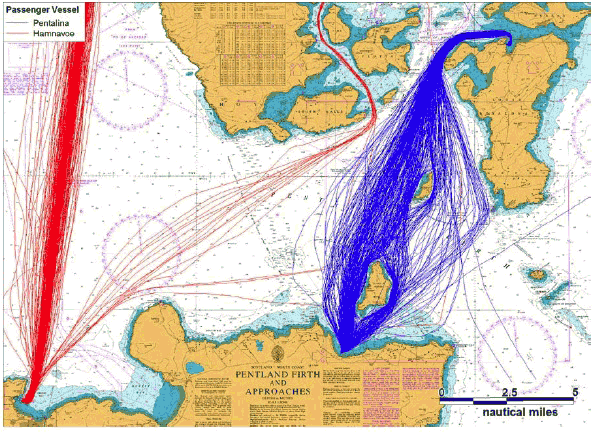
Figure 10.6 Hamnavoe and Pentalina Routeing based on Combined 2012 AIS Track Analysis
- The most common destinations of vessels tracked within the Strategic Area were Kirkwall, Scrabster and Stromness. Lerwick and Aberdeen were the most common destinations beyond the Strategic Area.
10.3 Recreational Vessels
Major components of the literature review and consultation were the collection and analysis of recreational vessel data calling at local harbours and marinas, including Scrabster, Wick, Kirkwall, Stromness and Westray. These clearly indicate the main period of activity for recreational vessels is summer, with very few visitors outside the period April to September. The majority of yachts tend to be from the UK but a large proportion are from overseas, particularly northern and western Europe.
Following a taking stock exercise, a questionnaire was designed and issued to individuals and organisations identified to have an interest in the area with the aim of filling in gaps in information, especially relating to small recreational vessel activity. The questionnaire was also made available online and advertised by the RYA and Cruising Association. A good level of participation was achieved with a total of 42 respondents. The feedback received is summarised in Section 6. It was identified that many recreational sailors consider the whole area to be important although particular key areas, such as marinas, harbours and anchorages were highlighted. The responses also made it clear that tide and weather are vital influencing factors on recreational vessel activity in the PFOW strategic area. The information was more qualitative than quantitative when it came to defining key routes, although useful feedback on the RYA Coastal Atlas indicative routes was provided.
The AIS data also formed a major component of the recreational vessel activity analysis presented in Section 8, although it was noted that AIS carriage is not mandatory for these vessels and therefore provided limited information. The AIS tracks provided helpful new information on the movements of recreational vessels. Unlike the RYA route information, they demonstrate the diversity of vessel tracks chosen by masters, which vary due to weather, tide, time available, individual preference, etc. By cross-referencing the AIS and marina data it was estimated that 17% of recreational vessels using the area broadcast on AIS. A length comparison indicated AIS was more common on larger yachts (10m and above in length). To increase the usefulness of the AIS data for smaller vessels, additional summer periods from 2011 to 2012 were added to give a total of approximately five months of tracking data.
Workshops were held in Orkney and Scrabster to review the AIS and RYA data with local stakeholders. A key focus was identifying alternative routes used by smaller vessels not on AIS. Potential amendments to the RYA Coastal Atlas routes were also discussed (in Section 8.4) and a plot of the suggested amendments presented in Figure 8.11.
Following the workshops and some additional consultation, estimates have been made of the 90% lane boundaries of recreational vessel routes and presented in Section 8.5, using a combination of statistical analysis in discrete locations / channels and visual inspection. These lanes more usefully characterise recreational vessel routes rather than centre-lines, with the widths of the lanes based on analysis of the lateral distribution of the tracks using that route. The maps presented generally show good agreement between these lanes and the RYA routes, whilst noting some key differences. ((This will assist the RYA in their ongoing discussions about how to revise and update the routes.)
Much can be gained from viewing the data presented in the graphs in Section 5 and the recreational vessel maps in Sections 8 and 9, but key conclusions include:
- The majority of recreational activity is constrained to the typical summer season (April to September) with very little activity taking place outside of this. Figure 10.7 presents a recreational vessel density plot for the Strategic Area.
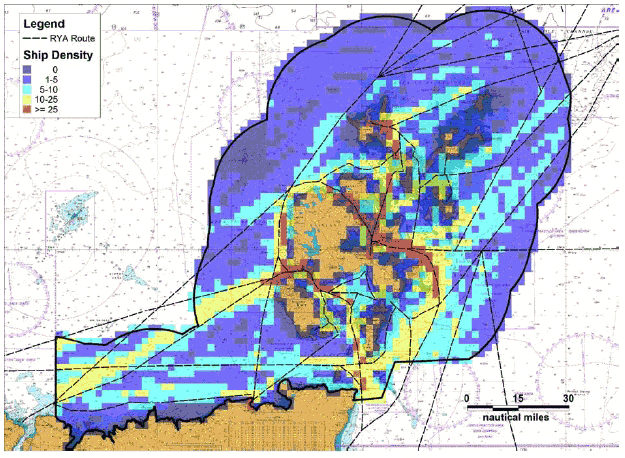
Figure 10.7 Recreational Vessel Density Plot
- Examples of year-round recreational activity, which are restricted to periods of suitable weather, include sailing, kayaking and leisure fishing.
- Tidal state and the prevailing weather conditions greatly influence recreational activity with some passages not possible given certain conditions.
- Thorough planning and the need to be readily adaptable are required in order to successfully navigate the waters around the PFOW Strategic Area.
- Overall the routes indicated by the RYA Coastal Atlas are indicative of true recreational routes used.
- However in parts the recommended routes are an over simplification and are not an accurate representation.
- Possible amendments that would increase the overall accuracy of the RYA Coastal Atlas recommended routes are included in detail in Section 8.5.4, and shown in Figure 10.8.
- Figure 10.8 also shows the lane boundaries that were estimated for recreational routes based primarily on the AIS survey data. These are presented overlaid on the survey tracks, RYA routes and amendments.
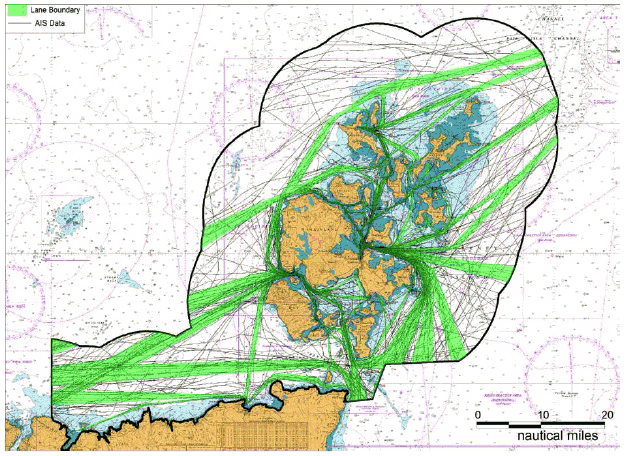
Figure 10.8 PFOW Recreational Routes and Lane Boundaries
10.4 Other Findings and Lessons Learned
Findings about other recreational activity are reviewed in Section 9 - covering dive boats, sailing clubs, sea angling, boat trips (tourism / sight-seeing / wildlife cruises) and sea kayaking - along with information collected during the course of the study on fish farm vessels (but note that commercial fishing is addressed fully in a separate Marine Scotland study). These findings noted that Kayakers are a separate, unique group that have some similarities to yacht sailors, but would benefit from further study to fully characterise their behaviours, activities and needs, e.g. in relation to sub-sea cable and other works in the nearshore.
The work, particularly stakeholder contributions, confirmed that commercial and recreational vessel activity is dynamic (e.g. economic and industry changes, current and future marina developments, impacts of 'signposting' by Visit Scotland, etc) and therefore it is recommended the study be updated periodically to take account of changes. Also, radar data were not accessible for this study but the consultation identified that OIC Marine Services Scapa VTS is being currently being upgraded and new radar scanners added to extend coverage. If possible, any future updates should incorporate radar survey data of smaller vessels, which would remove some of the limitations encountered in mapping recreational vessel movements. Integrating this data with the other sources would improve the accuracy of future work.
A key lesson learned was the benefit to the knowledge, its interpretation and gap- filling from the combination of Marine Scotland and the Steering Group involvement in the study's technical discussions, in combination with data analysis and consultation with local stakeholders. To obtain more input from some local stakeholders (e.g. local associations, diving clubs and sea anglers, etc.) in replications of this or similar studies, other means of consultation may be of help in the scope of work, e.g. attendance at one of their main events or AGM, or - if they make significant use of social networks (like Facebook) - this offers an alternative medium to engage them.
Contact
There is a problem
Thanks for your feedback